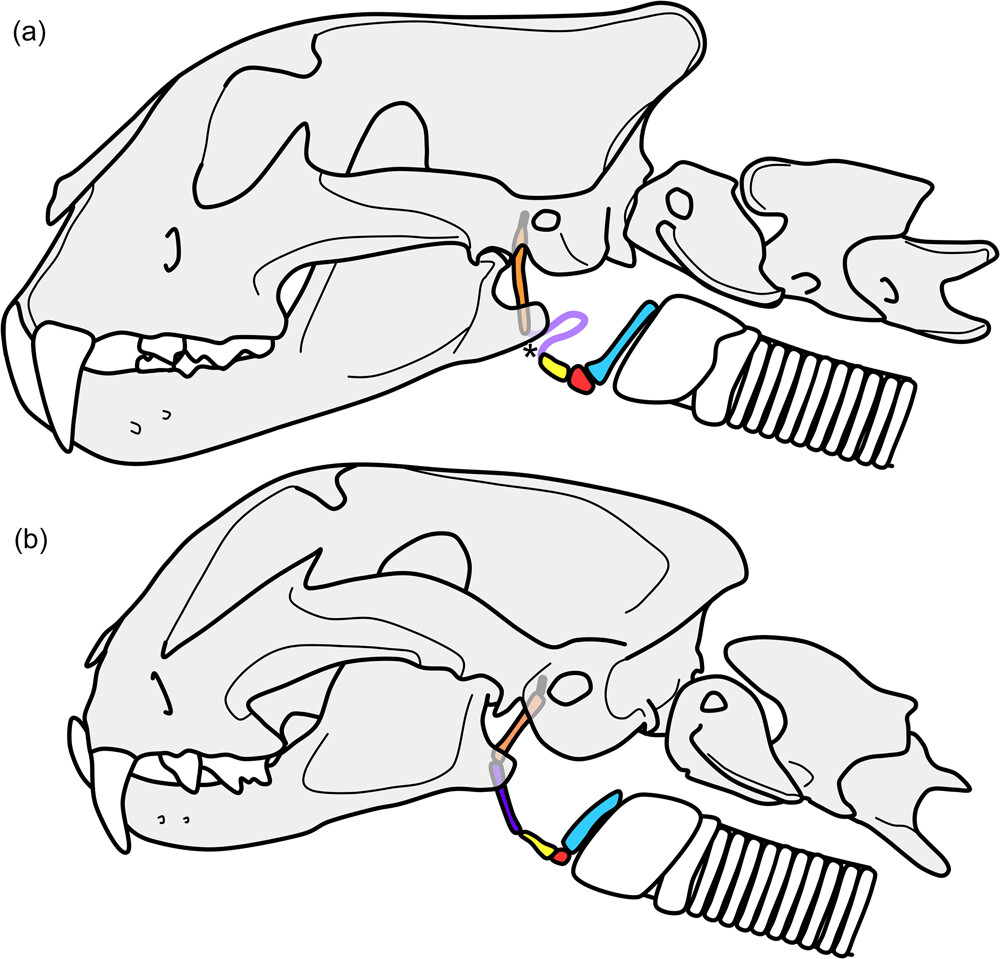The words “sabertooth cat” might conjure up images of large-fanged felines prowling around the ancient world, but did these big predatory pussy cats roar or purr? New research has revealed that the answer could be hidden in just a few little bones beneath the throat.
Vocalization in extant cat species is driven primarily by the larynx and the tissues present in the throat, and not by bones. However, when studying these ancient sabertooth species, these important soft tissues are long gone and all that is left are the bones under the skull that would have supported them. These bones are referred to as hyoid bones, and the number of them differs between roaring and purring cat species.
“While humans have only one hyoid bone, purring cats have nine bones linked together in a chain and roaring cats have seven,” says Ashley Deutsch, a PhD student at North Carolina State University and lead author of the research, in a statement. “The missing bones are located toward the top of the hyoid structure near where it connects to the skull.”
Sabertooth cats only have seven hyoid bones, suggesting that they would have roared. However, since the relationship between number of hyoid bones and vocalizations hasn’t been extensively tested, the team decided to make some more comparisons.
Four species of roaring cats – lions, tigers, leopards, and jaguars – and five species of purring cats – cougars, cheetahs, caracals, servals, and ocelots – were compared to 105 hyoid bones from the sabertooth cat Smilodon fatalis.

A) Hyoid bones in a tiger compared to B) in a caracal. The purple is the epihyoid, which is a ligament in the tiger.
“You can argue that since the sabertooths only have seven bones they roared, but that’s not the whole story,” says corresponding author Adam Hartstone-Rose. “The anatomy is weird. They’re missing extra bones that purring cats have, but the shape and size of the hyoid bones are distinct. Some of them are shaped more like those of purring cats, but much bigger.”
The missing bones are called epihyoid bones, and if they were the missing piece in how these ancient big cats made noises then the closely connected bones on either side should look different, depending on whether they were from the purring (Felinae) or roaring (Pantherinae) group of cats. However, the bones were actually very similar in size and shape. The team suggest that it is actually the lower bones in the hyoid structure that are more important to vocalizations than the higher ones.
“We found that despite what history has told us about the number of bones in the hyoid structure, no one has validated the significance of that difference,” Hartstone-Rose says. “If vocalization is about the number of bones in the hyoid structure, then sabertooths roared. If it’s about shape, they might have purred. Due to the fact that the sabertooths have things in common with both groups, there could even be a completely different vocalization.”
Smilodon, though a large predatory species, wasn’t the same size as a modern-day tiger or lion. Despite this, their hyoid bones were much larger than the bones of their largest living relatives. The team think this could be related to the pitch of the vocalization and could suggest that Smilodon produced vocalizations similar to purring cats, and that the vocalizations were at a lower frequency than even those of lions and tigers.
The study is published in the Journal of Morphology.
Source Link: Sabertooth Cats Might Have Purred, Roared, Or Made A Noise All Of Their Own